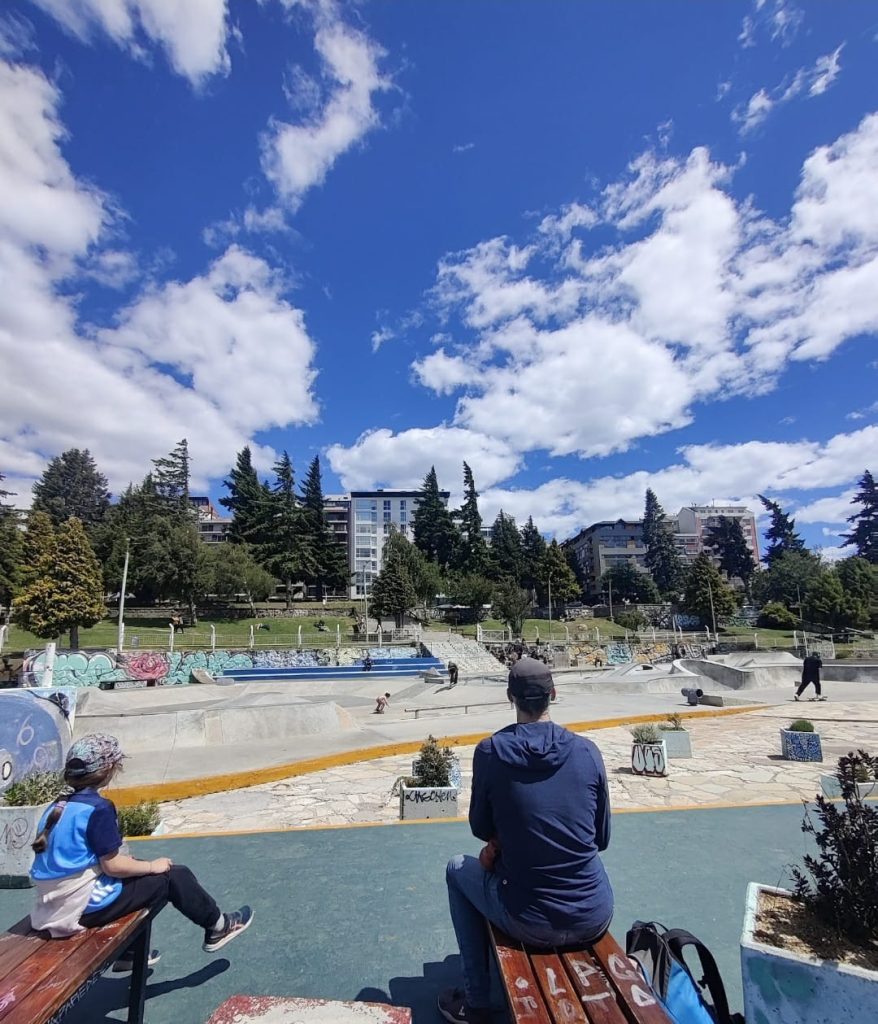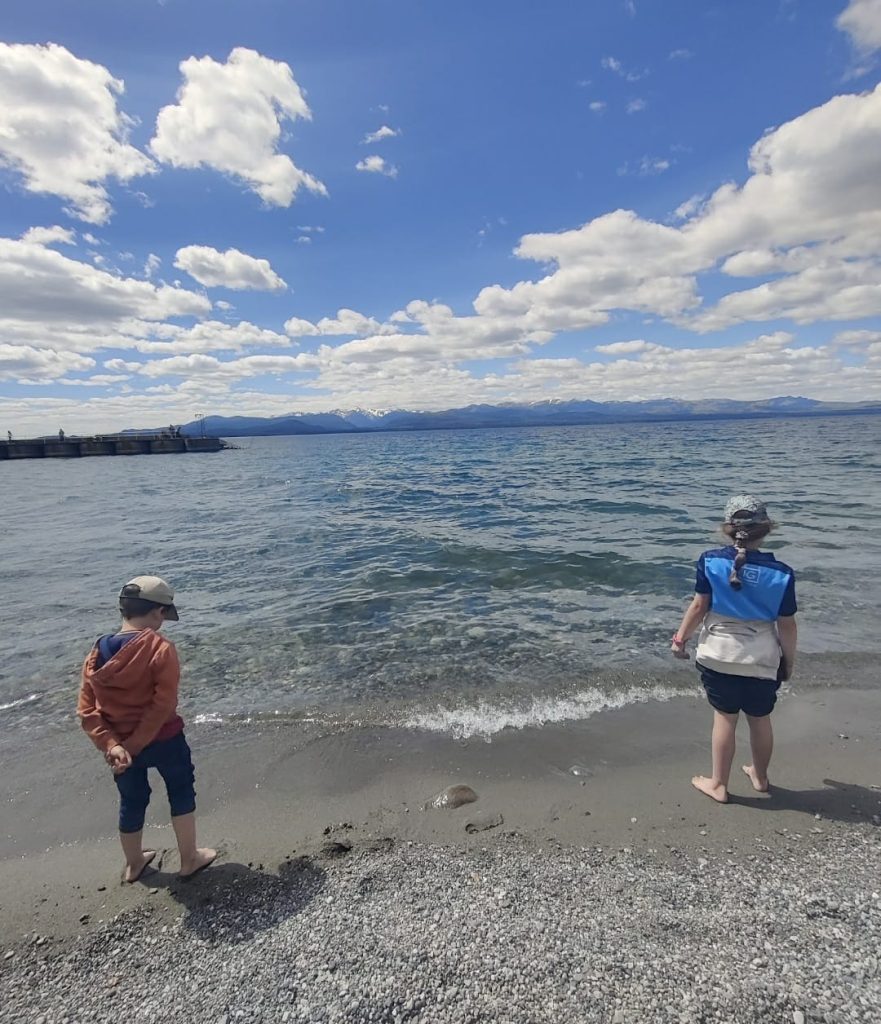Ruta 40, or “Route 40” as it is known in English, is the longest road in South America. At more than 5,000km long, it crosses an incredible 20 national parks, 18 major rivers and 27 Andes Mountain passes. Beginning in Rio Gallegos in the south, and finishing in La Quiaca in the far north, the road is an icon of overland travel.
Having departed Tierra del Fuego, we began our Ruta 40 adventure in Rio Gallegos. It was a less than ideal start, arriving at 1am in the morning, following a very long drive and border crossing from Chile. However, we had had no issues arriving and sleeping in the city, and by morning we were well rested and eager to explore the city. Our highlights of the day included a visit to an old locomotive museum followed by a visit to a dinosaur park. We particularly enjoyed the latter, with the local council having invested heavily in a wonderful amenity for young and old on the edge of the city.
We spent a good 5 hours the next day driving to El Calafate. This included struggling against the very strong Patagonian winds. The town of El Calafate is very appealing, with lovely restaurants, cafes, ice cream parlours and hotels in abundance for the arriving visitors. We spent a couple of days there, indulging in the local cuisine and frequenting the local playground. The vast majority of tourists visiting the town use it as a base before proceeding to Glacier National Park, and in particular, the Perito Moreno Glacier. We were no different, and spent a few days in awe at the sights there. An additional place we visited was the glacier museum just on the edge of El Calafate, in the direction of the national park. We really enjoyed the experience and would thoroughly recommend anyone to visit.
Another long driving day followed as we ventured a little off Ruta 40 to visit the hiking village of El Chalten. The town itself is nice, a little more rough and ready than El Calafate, but still meeting the requirements of most travellers. What it does excel in is accessible, spectacular, hiking routes. A good half dozen such routes all begin and end right in the town itself, so it makes logistics really straightforward. There are also numerous climbing possibilities close to the town to be enjoyed. Our visit in springtime brought relatively cold and wet weather, so unfortunately this was not something we got to partake it. The hiking was however possible, and as a family we enjoyed a few beautiful and varied routes. Again, certainly a place worth a visit if you are so inclined.
In reality, the next 1,125km were relatively tough driving, with bad roads and very little by way of distraction along the way. A visit to the ancient art work at Cuevas de los Manos, close to the tiny town of Bajo Caracoles was certainly a highlight. Both the actual caves themselves and the surrounding canyon were spectacular, and worth the effort to get there (they are located 70km off Ruta 40 and accessed via a dirt road). The town of Perito Moreno had it’s charm, but that was probably just relative to the other very isolated and sparsely populated and developed places we passed en route.
Arriving to Esquel was a big relief. We knew at that stage that we had passed through the most challenging part of Ruta 40 (that we would pass through ourselves anyway). Esquel was a vibrant town full of movement and life. So much life in fact that we had to change our parking spot on the main square at 3am due to the relentless music, noise and general merriment of the local population!
Located a mere 35km from Esquel, Los Alerces National Park is a wonderful getaway for locals and non-locals alike. The park owes its features to successive glaciations, which left a landscape full of moraines, glacial cirques and lakes. Surrounding these are beautiful dense forests with wonderful trails to be explored. We partook, and spent a few wonderful days there enjoying all that nature had to offer.
Next stop on Ruta 40 for us was the interesting town of El Bolson. Arriving after a 200km drive, we immediately saw why this town is different to any we had previously come across during our trip. The first so-called “hippies” arrived in El Bolson in 1969, inspired by the fight against the Vietnam War in the US. They took the ethos of wanting to live a different lifestyle and transformed a sleepy Argentine town. Today, the town is the centre of alternative thinking and living, and attracts people from all over Argentina who want to experience something else. I must say that we loved the town and all it had to offer. We met wonderful people, ate wonderful street food and visited local artesanal markets. Outside of the town, we enjoyed the hike to Cerra Amigo (three separate viewpoints of the town) and also the Bosque Tallado. This is a forest located towards the top of a mountain. which has more than 30 statues carved out of wood by numerous artists. It is a spectacular sight and something the locals are rightly very proud of.
The well-known city of San Carlos de Bariloche was our next destination. Located on the banks of the enormous Lake Nahuel Huapi and surrounded by the spectacular Andes Mountains, it really is picture-perfect. It is best known for its alpine style architecture and chocolate (which our family can confirm is really top-notch!), but can also boast of skiing and hiking options galore for visitors. As we arrived at the start of summer, the latter was on the menu for us. This mostly centred on the famous Circuito Chico and the many walks and viewpoints dotted throughout. We were in no way disappointed, with the area more than living up to its reputation. We departed Bariloche with heavy hearts, a place we would certainly like to re-visit again before too long.
Our lasts stops in mid-Argentina on the Ruta 40 would take us from Villa La Angostura, through the Seven Lake Region up to San Martin and June de los Andes.
Villa La Angostura was another ideal location, nestled on the northern banks of Lake Nahuel Huapi. The small town is an ideal spot for relax for a few days, or to enjoy lake activities or the surrounding forests. We did the former, wandering the streets and enjoying the local cuisine.
The Seven Lakes, or “Siete Lagos” as they are know locally, is a beautiful drive through an Alpinesque setting. Having our choice of lakes to stop at, we choose Lake Faulkner for an afternoon of swimming, meeting locals and generally chilling out. The Argentines know how to relax so we followed suit and were much the better for the experience.
San Martin de los Andes was the location of our first Christmas on the road. We could not have picked a better place to spend the festive week. This is an idyllic location, with Lake Lacar providing endless entertainment for locals and visitors. The town has everything you could want, and the people are delighted to welcome any and all tourists.
Junin de los Andes was smaller and a lot less developed than San Martin. However we really enjoyed our visit to the Via Christi Sculpture Park. There we found sculptures depicting the life of religious and non-religious figures. Not only do some of the sculptures represent the crucification, death and re-birth of Jesus Christ, there are also non-denominational and culturally-inclusive sculptures with messages about living as better humans. The park also includes a very testing ascent to the 23rd and final sculpture, reached via a 1km series of ramps and staircases. This sculpture is a 60 metre long depiction of Jesus Christ made from a combination of metal triangular sections filled with glass. Visitors can decide for themselves whether he is sinking into the ground or emerging from it.
Our Ruta 40 experience then took a two month sabbatical, as we travelled to the east cost of Argentina, through Uruguay, Brazil and Paraguay. We then re-emerged back on the Ruta 40 at the town of Cafayate, a mere 2,150km north of where we had left it. Cafayate lies at the intersection of the Ruta 68, an incredible section of road including 60km of Quebrada de las Conchas. The town itself is small but contains some nice local restaurants where cyclists, bikers and camper van drivers share travel stories late into the night.
La Quiaca, on the Argentina/Bolivian border marks the end of the Ruta 40. It was probably fitting then that we got to spend 10 days there before heading north into Bolivia. We were forced to wait there as we were waiting on a document to arrive for our vehicle. La Quiaca is like no other town I have stayed in. What can only be described as an army of local women can be seen bulk-buying items each morning from local warehouses, then scurrying back-and-forth across the border bridge throughout the day selling their wares to happy locals. Both adults and children managed to make good friends in the town also, with the natives hugely interested in us and our otherworldly vehicle.
Ruta 40 provided many many highs, and the odd low along the way for us. The road itself can be described as fair at best, but the physical highlights, combined with the wonderful people, more than made up for any discomfort along the way. Having driven a fair chunk of the route, we can understand what all the fuss is about, and would certainly recommend even part of the journey for any brave souls!















Leave a Reply